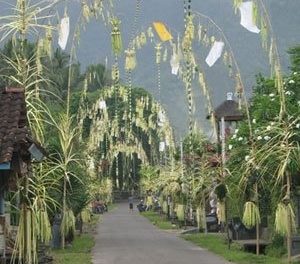This monsoon season has been nothing short of a wake-up call for many, with nature reminding us of its unpredictable power. The stunning landscape of Bali, a paradise for tourists and locals alike, is currently grappling with significant changes due to heavy rains and natural disasters.

Rethinking Safety in Bali’s Scenic Spots
As the annual rainy season intensifies, travelers and locals are encouraged to adopt a cautious mindset, particularly when exploring the island’s breathtaking yet precarious limestone cliffs. The Bukit Peninsula, often dubbed the jewel of Bali, boasts these rugged cliff terrains, cherished for their dramatic views and stunning resorts such as Uluwatu, Ungasan, and Kutuh.
However, an unsettling trend has emerged: a series of cliff collapses and landslides have raised red flags about safety in these picturesque areas. Just imagine planning your dreamy sunset view only to be reminded of the real dangers lurking nearby!
Recent Incidents Cause Alarm
A particularly alarming incident occurred on February 2nd, when footage surfaced showing a significant cliff collapse near the Tanjung Mebulu Lighthouse at the Jaran Hill Sunset Viewing Point. For those familiar with the area, this spot is merely a stone’s throw from the popular Uluwatu Temple.
Local environmental activist, Piter Panjaitan, posted a video via social media, warning visitors to exercise extreme caution near the unstable cliffs. He passionately urged, “WARNING to all Uluwatu locals and visitors! The cliff near the Lighthouse by the Seawall Project is looking unstable and dangerous! Be extra careful if you’re heading there to watch the sunset!”
Community Reactions
As news of the cliff collapse spread, social media lit up with messages of sorrow and concern from both locals and visitors who cherish their time in Bali. It’s heart-wrenching to see the impact on these beautiful landscapes, especially as the normally clear waters of the bay now appear murky and brown, tainted by debris.
The Bigger Picture: Infrastructure and Environmental Concerns
This isn’t the first time we’ve seen such collapses. On January 6th, a major incident at the iconic Tanah Barak Cliffs near Pandawa Beach left the area inaccessible for days. Imagine trying to enjoy a sunny day at what you thought was a stable beach, only to find a wall of rock blocking your way!
Thankfully, no injuries were reported, but it served as a significant reminder for all of us about the consequences of rapid tourism development and infrastructure projects that may be contributing to these changes.
Facing the Future: What Can Be Done?
As Bali’s communities grapple with these ongoing environmental challenges, many are turning to social media to voice their concerns about the impact of tourism on the delicate coastal ecosystems. The Uluwatu Sea Wall Project, despite facing significant backlash, is nearing completion—with over 80% done. Will this be a savior or a further threat to these cherished landscapes?
The project’s head, Anak Agung Rama Putra, assured the public of its completion plan. However, the crumbling limestone cliffs, especially those near the revered Uluwatu Temple, have left many wondering if such developments do more harm than good.
As we navigate these changes, it’s vital for tourists and locals to remain vigilant. Prioritize your safety, heed warnings, and take extra precautions when exploring Bali’s stunning but unpredictable landscapes.
With awareness and a bit of caution, we can all enjoy the beauty of Bali while respecting the mighty forces of nature. Let’s cherish this paradise and advocate for sustainable tourism practices that protect these breathtaking cliffs for generations to come.






